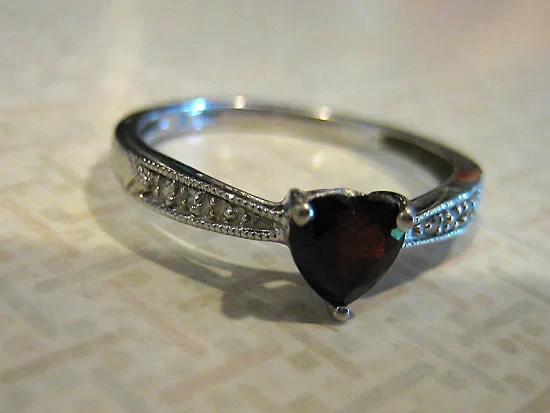The Ring

Ring: circular band of gold, silver, or some other precious or decorative material that is worn on the finger. Rings are worn not only on the fingers but also on toes, the ears and through the nose. Besides serving to adorn the body, rings have functioned as symbols of authority, fidelity, or social status.
Basically, a ring consists of three parts: the circle, or hoop; the shoulders; and the bezel. The circle can have a circular, semicircular, or square cross-section, or it can be shaped as a flat band. The shoulders consist of a thickening or enlargement of the circle wide enough to support the bezel. The bezel is the top part of a ring; it may simply be a flat table, or it may be designed to hold a gem or some other ornament.
The earliest existing rings are those found in the tombs of ancient Egypt. The Egyptians primarily used signet, or seal, rings, in which a seal engraved on the bezel can be used to authenticate documents by the wearer. Egyptian seal rings typically had the name and titles of the owner deeply sunk in hieroglyphic characters on an oblong gold bezel. The ancient Greeks were more prone to use rings simply for decoration, and in the Hellenistic period the bezel began to be used to hold individual cabochon stones, such as carnelians and garnets, or vitreous pastes. In Rome rings were an important symbol of social status. In the early centuries of the Roman Republic, most rings were of iron, and the wearing of gold rings was restricted to certain classes, such as patricians who had held high office. But by the 3rd century BC the privilege of wearing rings had been extended to the class of knights, or equites, and by the 3rd century AD, during the Roman Empire, practically any person except a slave was allowed to wear a gold ring. The Romans are also thought to have originated the custom of betrothal rings, or engagement rings, symbolizing a promise of marriage to a member of the opposite sex.
Throughout the European Middle Ages, the signet ring was of great importance in religious, legal, and commercial transactions. The Roman Catholic church conferred episcopal rings upon newly appointed bishops, and so-called papal rings were given by popes to cardinals. An enormous papal ring called the Fisherman’s Ring—made of gilded bronze and bearing the image of St. Peter fishing—is traditionally used by the pope as a seal for pontifical documents. Besides these types, there were memorial rings, upon which were engraved the name, date of death, or even the effigy of a deceased person; posy rings, upon which were engraved an inscription or a few lines of verse; occult rings, which functioned as talismans or amulets and were supposed to have magical powers; and poison rings, whose hollow bezels contained a poison for purposes of suicide or homicide. Rings with bezels that opened may also have held sentimental keepsakes in miniature.
By the 19th century, the traditional distinctions between ring types had mostly broken down, giving way to rings of all kinds inspired by past styles. Fine-quality modern rings, many of which are machine-made, usually consist of gold or silver and feature standard-sized diamonds or other precious stones. They are worn either for purposes of simple adornment or as symbols of betrothal and marital fidelity.